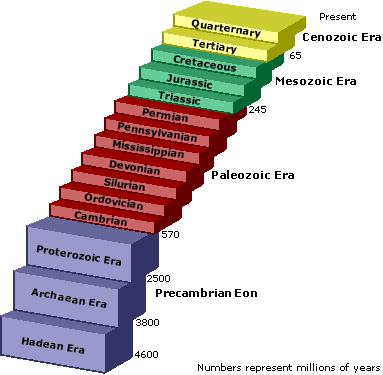
A new study says these blobs definitely aren't brains. (Liu J. et al./Proceedings of the Royal Society B)
Posted on 04/18/2018 4:47:04 AM PDT by ETL
Here's a brainteaser: Do the 520-million-year-old fossils of an ancient, bug-like creature actually show a silhouette of its brains? Or are these blobby shapes in its head merely fossilized bacteria?
According to a new study, the fossilized structures in the Cambrian-period creature's head aren't brainy remains, but rather fossilized bacterial mats, called biofilms.
However, not everyone is on board with this interpretation. The researchers who originally discovered the brains are standing by their results, and other paleontologists Live Science interviewed agree with them. [Fabulous Fossils: Gallery of Earliest Animal Organs]
The creature in question, Fuxianhuia protensa, is an early arthropod, a group that includes modern-day insects, spiders and crabs. The roughly 3-inch-long (7.6 centimeters) segmented critter lived in what is now southern China during the Cambrian, a period that lasted from about 542 million to 488 million years ago.
(Excerpt) Read more at foxnews.com ...

A new study says these blobs definitely aren't brains. (Liu J. et al./Proceedings of the Royal Society B)

Next!
If you've got anymore hard questions I'll be here all week. Don't forget to tip your server and try the veal I hear that it's to die for.
Are you referring to the structures found within the creature? What some think are its brains?

Bryozoa (also known as the Polyzoa, Ectoprocta or commonly as moss animals)[6] are a phylum of aquatic invertebrate animals.
Typically about 0.5 millimetres (0.020 in) long, they are filter feeders that sieve food particles out of the water using a retractable lophophore, a “crown” of tentacles lined with cilia. Most marine species live in tropical waters, but a few occur in oceanic trenches, and others are found in polar waters.
One class lives only in a variety of freshwater environments, and a few members of a mostly marine class prefer brackish water. Over 4,000 living species are known. One genus is solitary and the rest are colonial.
The phylum was originally called “Polyzoa”, but this term was superseded by “Bryozoa” in 1831.
Another group of animals discovered subsequently, whose filtering mechanism looked similar, was also included in “Bryozoa” until 1869, when the two groups were noted to be very different internally. The more recently discovered group was given the name Entoprocta, while the original “Bryozoa” were called “Ectoprocta”. However, “Bryozoa” has remained the more widely used term for the latter group.
Individuals in bryozoan (ectoproct) colonies are called zooids, since they are not fully independent animals. All colonies contain autozooids, which are responsible for feeding and excretion. Colonies of some classes have various types of non-feeding specialist zooids, some of which are hatcheries for fertilized eggs, and some classes also have special zooids for defense of the colony. The class Cheilostomata have the largest number of species, possibly because they have the widest range of specialist zooids.
A few species can creep very slowly by using spiny defensive zooids as legs. Autozooids supply nutrients to non-feeding zooids by channels that vary between classes.
All zooids, including those of the solitary species, consist of a cystid that provides the body wall and produces the exoskeleton and a polypide that contains the internal organs and the lophophore or other specialist extensions. Zooids have no special excretory organs, and the polypides of autozooids are scrapped when the polypides become overloaded by waste products; usually the body wall then grows a replacement polypide.
In autozooids the gut is U-shaped, with the mouth inside the “crown” of tentacles and the anus outside it. Colonies take a variety of forms, including fans, bushes and sheets. The Cheilostomata produce mineralized exoskeletons and form single-layered sheets which encrust over surfaces.
https://en.m.wikipedia.org/wiki/Bryozoa

That movie scared the crap out of me when I was a kid.
L

(f) is clearly a bird kissing a girl on the forehead.


A little angel girl with wings.
Hypnotoad!

They’re a prehistoric psychiatrist’s Rorschach test tablets.
Disclaimer: Opinions posted on Free Republic are those of the individual posters and do not necessarily represent the opinion of Free Republic or its management. All materials posted herein are protected by copyright law and the exemption for fair use of copyrighted works.